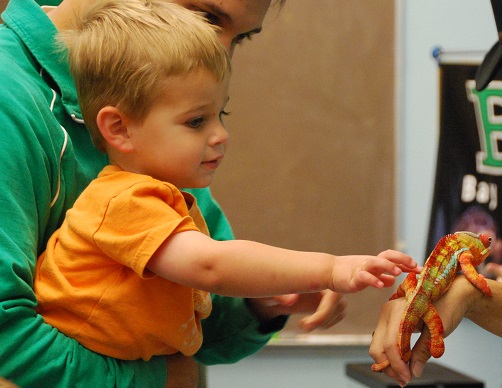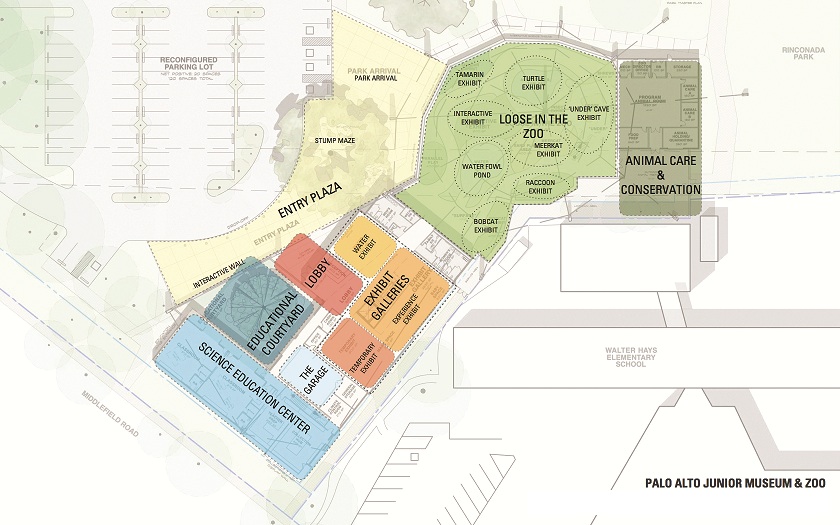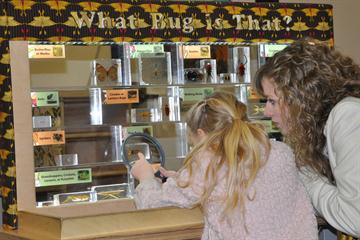The Palo Alto Junior Museum (JMZ), which has been educating young children in the mid-Peninsula about science for over 80 years, is badly in need of a remodel. The current building, at 1451 Middlefield Road, suffers from low ceilings, inadequate classrooms and an antiquated and inefficient heating and cooling system. But despite its somewhat dilapidated space, the JMZ attracts around 150,000 visitors a year.
Faced with robust attendance at the museum, along with demand for its school-based science programs and camps, the organization’s leadership aims to bring the building into the 21st century with an innovative redesign that will further the JMZ’s mission to engage children’s curiosity about science and nature. The more modern facility will also greatly improve visitors’ experience, with updated amenities such as stroller parking, new bathrooms and improved bike access.
As JMZ executive director John Aikin said at a recent event, “The remodel is not about expanding the scope or size of the museum. Instead it’s about creating a right-sized building that will allow us to serve the children of Palo Alto in new and exciting ways.”
Proposed features of the new design include a living “green” roof and large open area called ‘Loose in the Zoo,’ where children will be able to interact with butterflies, rabbits, ducks, and maybe even some small antelopes called dik-diks. In addition, children will explore and climb through animal habitats from below the ground and into the tree canopy.
Another essential element of the new design is the modernization of the JMZ’s classrooms, which will allow the museum to expand its onsite education and camp offerings as well as its school-based experiential science programs, which currently serve 14,000 students. The JMZ provides hands-on science instruction in 75% of PAUSD elementary schools (funded largely through Palo Alto Partners in Education), as well as several schools in Ravenswood School District in East Palo Alto and eastern Menlo Park. See video about JMZ’s school-based programs here.
Following the successful makeover of the Palo Alto Art Center, which was mainly funded through private donations, the Friends of the Junior Zoo, a non-profit support organization, is spearheading a capital campaign called the JMZ Initiative to pay for the new building. Aiming to raise $30 million, the JMZ Initiative is off to a strong start with a $15 million matching grant from the Peery Foundation designed to inspire others to give. The Junior Zoo and the Art Center are both owned and operated by the City of Palo Alto but also benefit from partnerships with nonprofit support organizations that raise funds to provide more programs and outreach to the community.
Although the JMZ’s effort to upgrade its building first began in 1997, the impetus for the new design came out of the City’s master plan for Rinconada Park, which is adjacent to the museum. In the new plan, the square footage of the new JMZ is proposed to increase by over 50% but the footprint of the museum will expand only slightly. The JMZ leadership is committed to ensuring that the new facility will provide continuity with the museum’s history and fit into the aesthetics of the neighborhood it serves.
The process for gaining planning and design approval from the City of Palo Alto took a big step forward on November 10 when the City Council approved a letter of intent about the building remodel that lays out the roles the City and Friends of the JMZ will play in the process. The JMZ is hoping to complete its fundraising and approval process by 2016, move into temporary space (probably at Cubberley Community Center) for two years, and open the new building in 2018.
To donate to the JMZ Initiative or learn more, visit the organization’s webpage.








